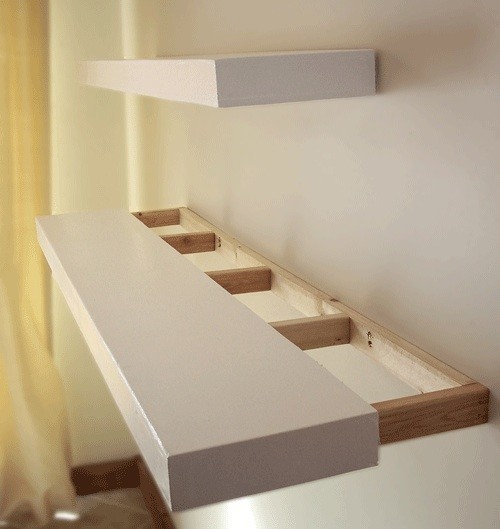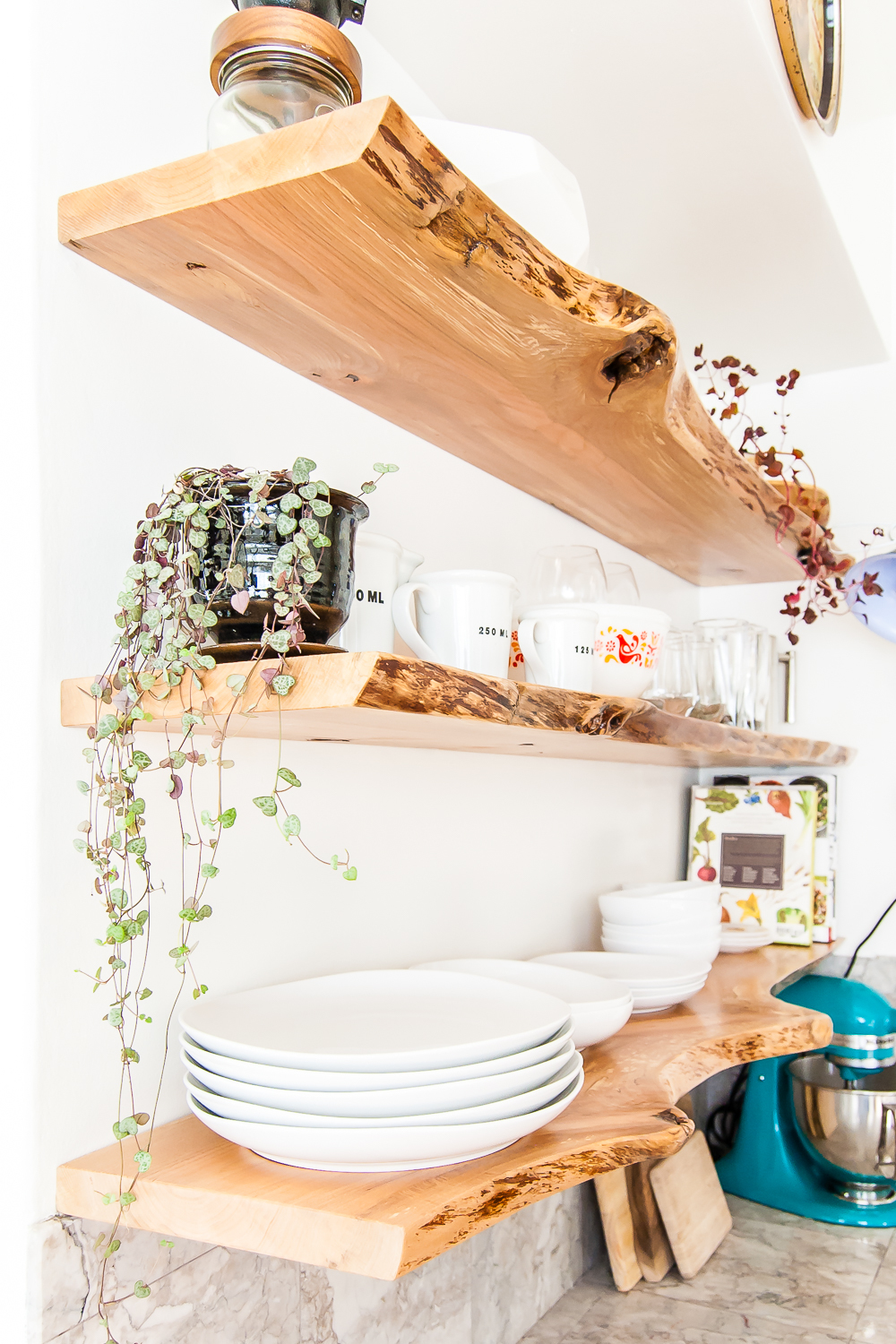Creating a stylish and functional space has become increasingly important as more and more people spend time in their homes. One great way to achieve this is by adding floating shelves to your walls. In this post, we will explore the world of floating shelves and everything you need to know before adding them to your home.
Table of Contents
Easy DIY Floating Wall Shelves
The first image showcases how easy it can be to DIY floating shelves. These types of shelves are designed to be mounted directly to the wall with hidden brackets, creating a sleek and modern look. Anyone with basic woodworking skills can make their own floating shelves and it only takes a few hours from start to finish.

Installing Floating Shelves
The second image shows how simple installing floating shelves can be. The process involves finding the studs in the wall and then mounting the brackets to these studs. Once the brackets are secure, you can easily attach the shelf to the brackets for a floating effect. It is important to ensure the shelves are level and secure before adding any items to them.

Wooden Shelf Ideas
The third image showcases various wooden shelf ideas. Wooden shelves offer a classic and timeless look that can fit into any home décor. You can use different types of wood to create unique shelving designs that match your personal style. Wooden shelving can be stained or painted to match the color scheme of your space.

Floating Corner Shelves
The fourth image displays floating corner shelves. These shelves are designed to fit perfectly in the corners of a room, saving space and adding functionality. They can be used to store books, pictures, and other small items. Floating corner shelves can be installed in any part of the room, including above furniture like sofas and beds.

DIY Solid Hardwood Floating Shelves
The fifth image showcases how to create your own solid hardwood floating shelves. These shelves are built using hardwood to create a durable and sturdy design that can withstand heavy items. You can customize the size and shape of the shelves to fit your specific needs. This tutorial shows you all the steps needed to create your own DIY floating shelves.

Einbauschrank Nische
The sixth image showcases how you can create additional storage space by utilizing the space within the walls. Einbauschrank Nische, a German term for built-in closet niche, involves carving out space in the walls to create shelves and cabinetry. This technique can make use of otherwise unused space and create more storage without taking up any floor space.

2″ Thick Solid Wood Floating Shelf
The last image showcases a 2″ thick solid wood floating shelf. This type of shelf is made from rough sawn wood, giving it a rustic and natural look. These shelves are perfect for showcasing decorative items or plants. They are also sturdy enough to hold heavier items like books or electronic devices.

What Are Floating Shelves?
Floating shelves are shelves that are mounted onto the wall with hidden mounting brackets, creating an illusion of a floating shelf. They provide a modern and chic look and are perfect for small spaces that need extra storage. Floating shelves can be made of various materials such as wood, metal, or glass.
Why Use Floating Shelves?
Floating shelves are a great way to add storage and display space without taking up floor space. They create a modern and sleek look that matches any room’s décor. Floating shelves are perfect for showcasing decorative items or creating a gallery wall. They are also practical for storing books or kitchen items like dishes and jars.
Different Types of Floating Shelves
There are various types of floating shelves based on the type of material used and their design. The most common types include:
- Wooden floating shelves
- Metal floating shelves
- Glass floating shelves
- Corner floating shelves
- Built-in floating shelves
Benefits of Using Floating Shelves
Floating shelves come with several benefits to homeowners. Some of the benefits include:
- Floating shelves add storage space without taking up floor space
- They provide a modern and sleek look to any room
- They are easy to install and can be DIYed
- They can be customized to match the room decor and style
- They are affordable and budget-friendly
Advantages of Floating Shelves Over Traditional Shelving
Floating shelves come with several advantages over traditional shelving. Some of the advantages include:
- Floating shelves take up less space
- They offer a modern and sleek design
- They are perfect for small spaces
- They are quick and easy to install
- They give the illusion of a larger room with no heavy furniture pieces taking up space
How to Install Floating Shelves
Installing floating shelves is a simple and easy process. Here are the steps involved:
- Measure the space where you want to install the shelves
- Locate the studs in the wall using a stud finder
- Mark the position of the shelves on the wall with a pencil
- Mark the location of the bracket holes on the wall
- Drill pilot holes into the wall at the marked locations
- Attach the brackets to the wall using screws and anchors
- Attach the shelf onto the bracket by sliding it over the bracket
- Ensure that the shelf is level and secure before adding items to it
Tips for Decorating with Floating Shelves
Now that you have installed your floating shelves, it is time to decorate them. Here are some tips to help you make the most of your new storage space:
- Use plants to add life and freshness to the shelves
- Create a gallery wall by displaying pictures and artwork
- Group items together in odd numbers for a more pleasing display
- Use colored or patterned fabric as a background for decorative items
- Use small baskets or trays to keep small items organized on the shelves
With the information provided in this post, you are now equipped to add floating shelves to your home. Remember, they provide both functionality and style, making them an excellent addition to any room. Have fun experimenting with different materials and designs to find the perfect floating shelves for your space.
 Woodworking Ideas Latest Woodworking Design Ideas
Woodworking Ideas Latest Woodworking Design Ideas


